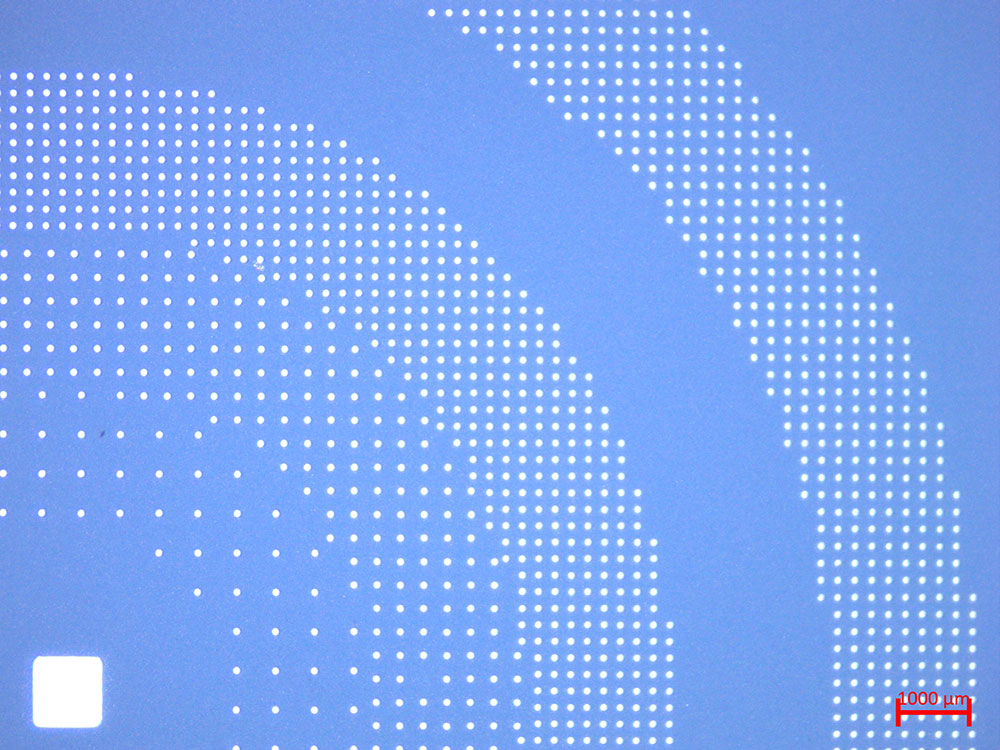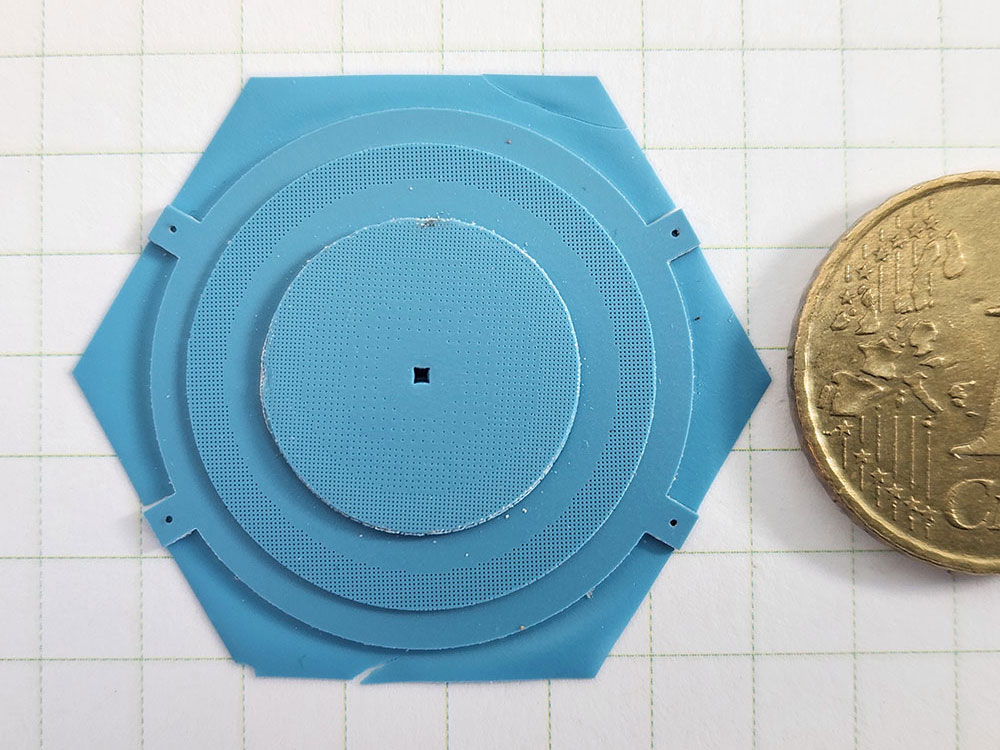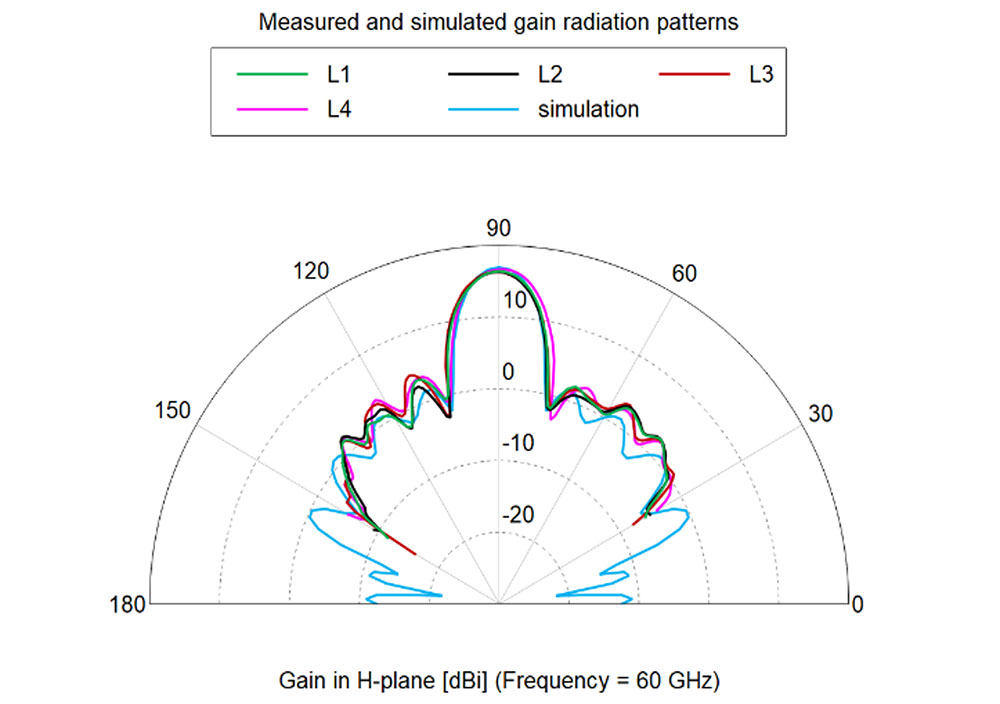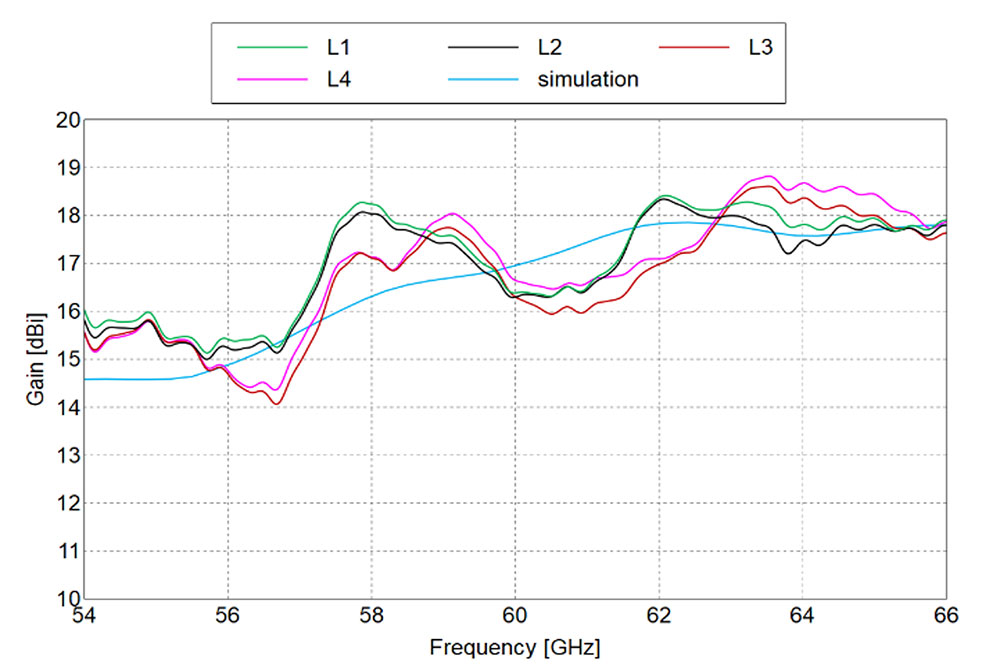In high-frequency technology, lenses are of crucial importance for the manipulation and guidance of electromagnetic waves. They enable precise control of the direction of propagation of signals in the microwave and millimeter wave range and are therefore indispensable for the development of efficient antenna and transmission systems. One type of RF lenses are gradient index lenses (GRIN lenses). These lenses use a graded refractive index profile to influence the direction of wave propagation. As part of our work, we are implementing GRIN lenses for millimeter wave frequencies in LTCC technology.
The manufacturing of the GRIN lenses begins with the cutting and punching of the flexible LTCC films. In the example shown (figure 1, right), the structure consists of four zones that reflect the cylindrical or pyramidal geometry. In the next production step, around 5000 holes with 100 µm openings are inserted in each LTCC tape (figure 1, left). The partial zones of the lenses are then stacked with high precision in a special tool using the alignment markings and the lens zones are cut out of the pre-laminate. The four lens zones are then stacked on top of each other and laminated. Finally, sintering takes place in an LTCC sintering furnace. Figure 1 (right) shows the GRIN lens after sintering.



